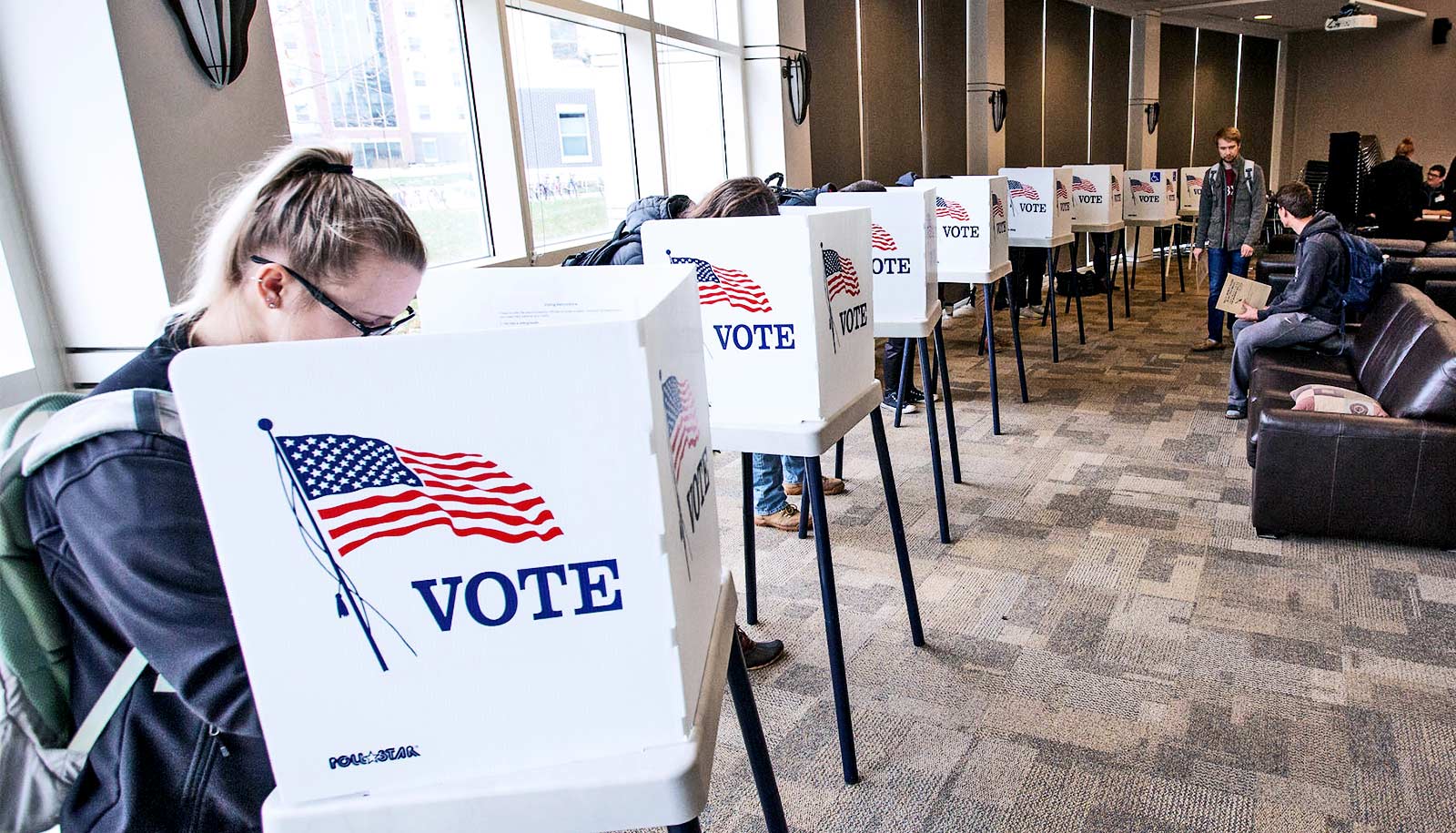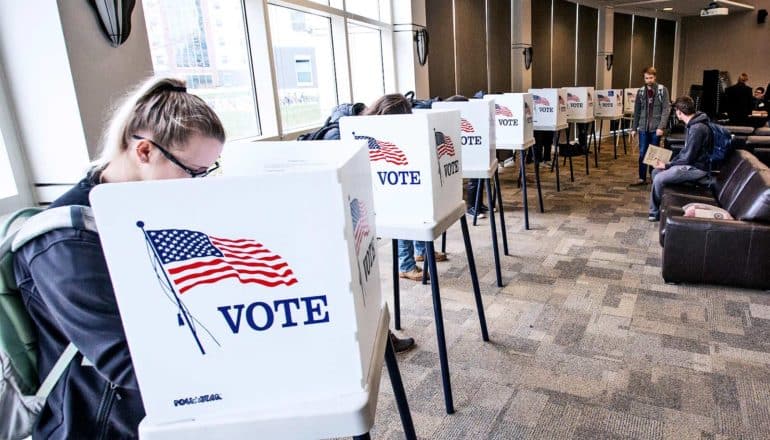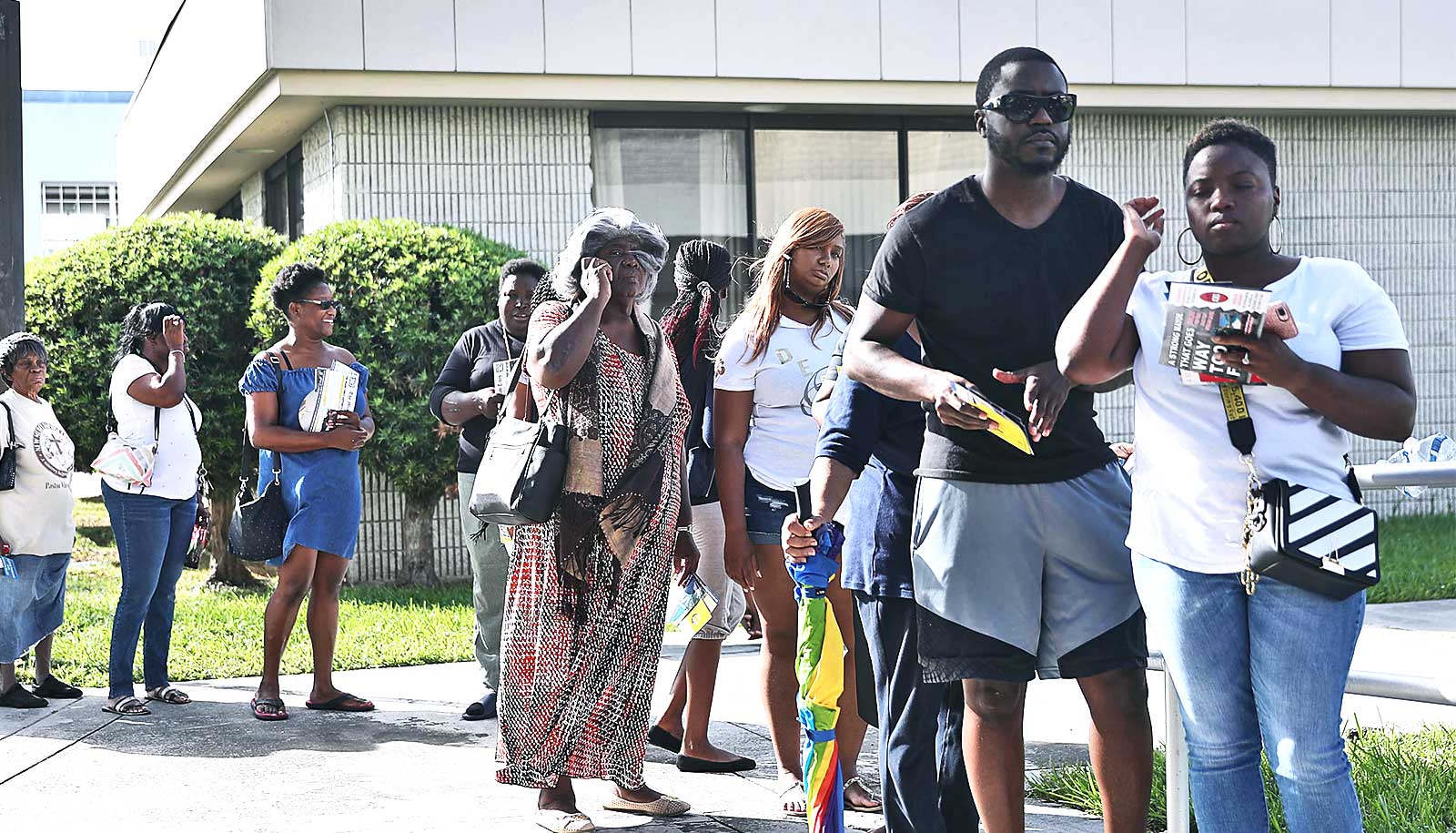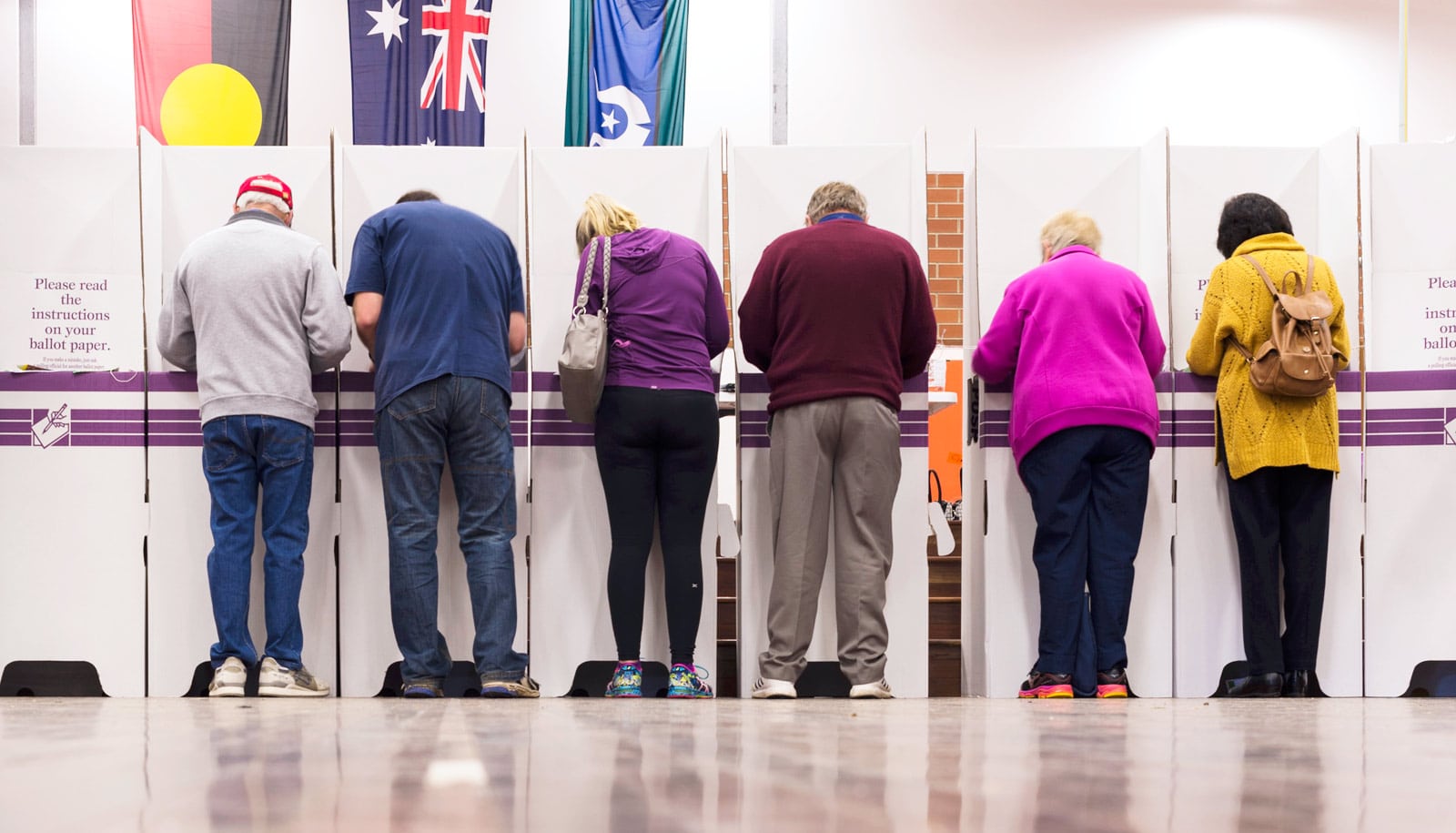
Voters fill out ballots during the 2018 election. (Credit: Christopher Gannon/Iowa State U.)
What made voters flip parties in 2016?
What made voters switch their vote from Democrat to Republican in the 2016 presidential election? It wasn't economic anxiety, researchers report.

Iowa had more counties flip from Democrat to Republican than any other state, and the reason why had little to do with economic anxiety, research finds.
Instead, the research shows rurality, education and race significantly predicted the change from Democrat to Republican.
Researchers analyzed county-level data from the US Census Bureau, Congressional Quarterly, Bureau of Labor Statistics, and the American Community Survey to measure how economic status, geographic context, and social identity influenced voters. Their results show white, rural voters without a college education were more likely to switch to Republican.
“At the gut level, people react to identities and protect those identities more than their livelihoods.”
As the race for the 2020 presidential election ramps up, so too will questions about voter attitudes in states that switched from blue to red in 2016.
The new findings counter the narrative that emerged from 2016, which suggested blue-collar workers left behind by the economic downturn were the reason why Iowa supported President Donald Trump, after voting for President Barack Obama in 2008 and 2012. The researchers looked at three economic indicators—income, adults not working, and employment change—none of which was significant.
“It was important to look more broadly at social identities, including race or in many counties whiteness, education, and age to help explain this shift,” says Ann Oberhauser, a sociology professor from Iowa State University. “We see why the nativist narrative about taking back America and the anti-immigrant sentiment became stronger forces than economic issues.”
Identity, not economics
The researchers expected nativist attitudes to resonate in counties with large immigrant populations, but it was the whitest counties that appeared to have the greatest fears about immigrants. These counties were often rural areas, which tend to manifest traditional cultures and attitudes reflecting white, masculine identities and a nativist version of Americanism that rejects globalization.
“…we’re losing the middle or this space where people with political differences can talk to one another.”
In the paper, they point to Mitchell County—one of the most rural counties in Iowa—as an example. The county near the Minnesota border voted twice for Obama, who won by 12.3 percent in 2008 and 3.4 percent in 2012. In 2016, Trump carried the county by 24 percent for a 2008-2016 swing of more than 36 percent.
Such fears about immigration and immigrants’ dual loyalty seem to be more perceived or symbolic, the researchers say. Their findings are consistent with a 2016 study by current-study coauthor Abdi Kusow and Matt DeLisi, which looked at dynamics that make people more or less accepting of immigration. Kusow says job replacement and other economic factors were not a concern for those with a strong anti-immigration sentiment.
“At the gut level, people react to identities and protect those identities more than their livelihoods,” says Kusow, a professor of sociology. “They’re worried about the use of the English language, religion, or whether immigrants share our values and vision of America.”
Collapsing middle
Iowa has maintained its first-in-the-nation caucus status in part because of its history of political moderation. The 2016 presidential election broke from that tradition and signaled an increase in polarization. Coauthor Daniel Krier says understanding this divisiveness is important to identifying threats to political moderation, pragmatic politics, and participative democracy.
“Iowa’s caucus structure ensures people of different political perspectives come together and listen to each other as part of the process,” says Krier, professor of sociology.
“Because of increasing polarization, we’re losing the middle or this space where people with political differences can talk to one another.”
The 2018 midterm election results seem to suggest the pendulum may be swinging back to the middle, the researchers say. They now plan to visit counties that shifted from Democrat to Republican and talk with voters about their decisions. They hope the interviews will give them a deeper understanding of the factors driving polarization.
The work appears in the Sociological Quarterly.
Source: Iowa State University
The post What made voters flip parties in 2016? appeared first on Futurity.
Share this article:
This article uses material from the Futurity article, and is licenced under a CC BY-SA 4.0 International License. Images, videos and audio are available under their respective licenses.


